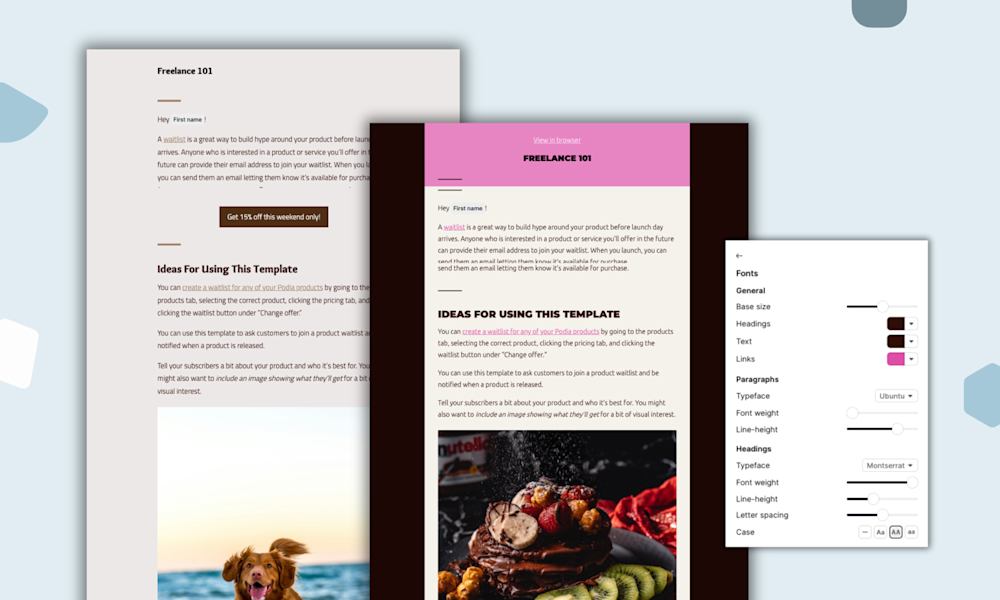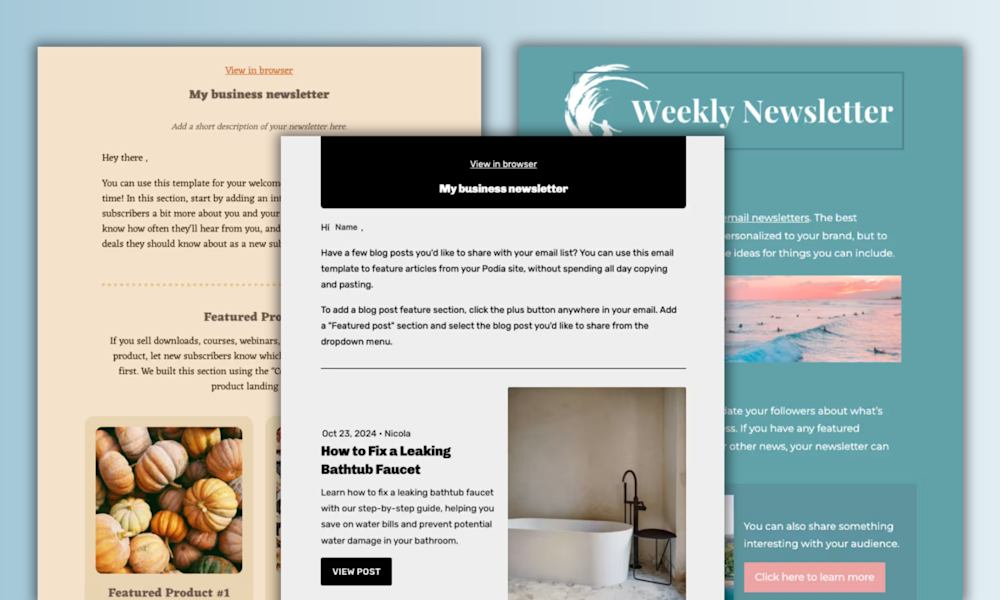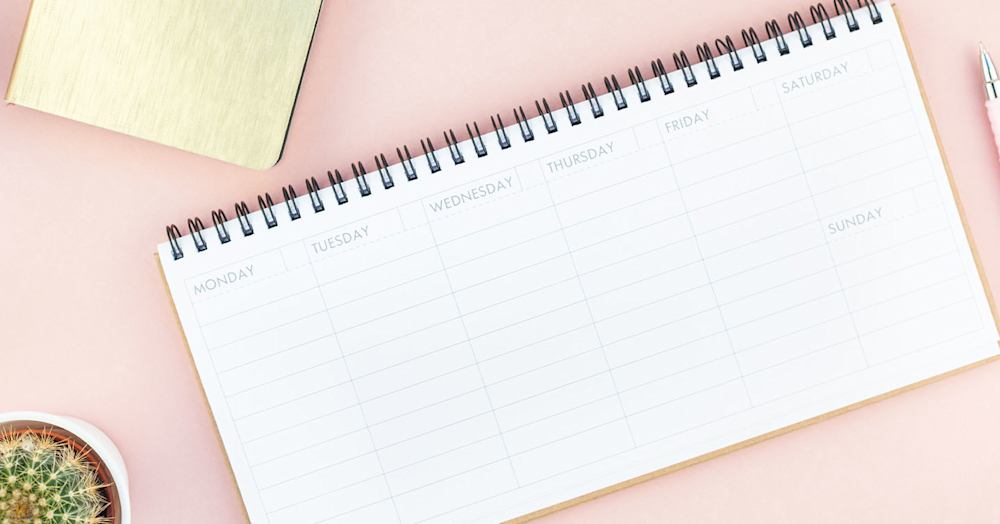You’ve been putting in the work to build your email list. You have a solid subscriber count, and you’re consistently sending out your email newsletter and product launch emails.
You take a look at your email metrics, and a mystery unfolds: A big chunk of your audience isn’t opening your emails. Or maybe they’re opening your emails but aren’t clicking on any of your links.
What gives?
If you’re sending every email to your entire list, that’s a likely culprit. Your audience is made up of individuals, and they expect you — and every business they interact with — to treat them as such.
Here’s the good news: You don’t need to write a painstakingly personalized email for every single subscriber.
Instead, use email segmentation. When you segment your email list, you can give your contacts the relevant content they crave, which means higher email engagement, fewer unsubscribes, and happier customers.
In this article, we’ll cover the basics of email segmentation, including why it’s so important and five ways to use it in your own email marketing.
But first, let’s make sure we’re all on the same page about what email segmentation is.
What is email segmentation?
Segmentation is the process of dividing your email subscribers into smaller lists — a.k.a. segments — based on set criteria.
Email marketing segmentation is often used to create a more targeted and personalized customer experience, which is a win for creators and customers alike.
Instead of sending the same email to your entire list, you can send more relevant email content to subscribers based on a segment’s demographics, interests, purchase history, and much more.
What makes email segmentation such a vital part of an email marketing strategy? Keep reading to find out.
Why should you use email list segmentation?
Email marketing is one of the most affordable and effective marketing tools…but only if you use it right.
Now more than ever, consumers expect a personalized experience whenever they interact with a brand, and email is no exception.
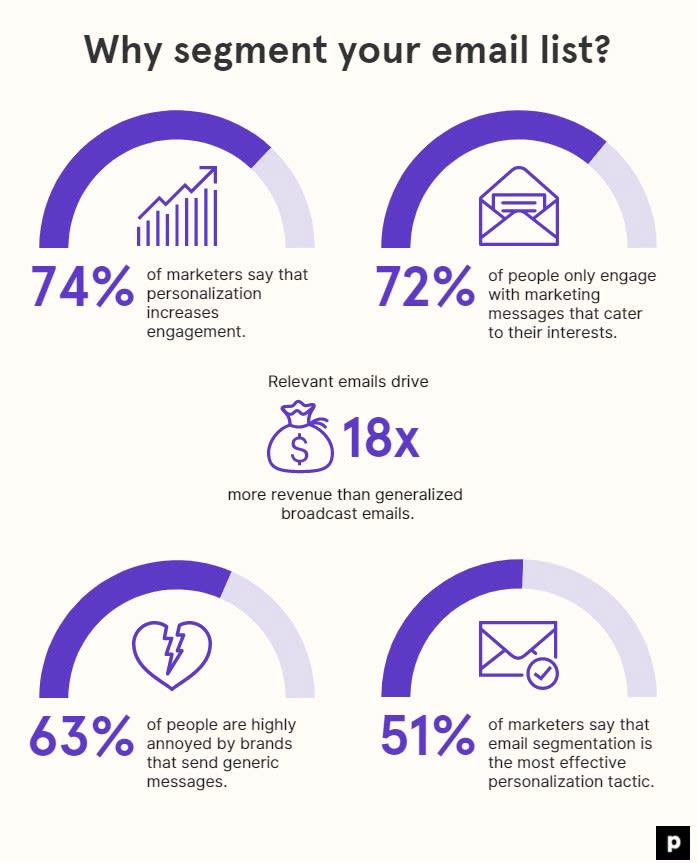
-
74% of marketers say personalization increases engagement.
-
72% of people only engage with marketing messages that cater to their interests.
-
Relevant emails drive 18x more revenue than generalized broadcast emails.
-
63% of people are highly annoyed by brands that send generic messages.
-
51% of email marketers say that email list segmentation is the most effective personalization tactic.
This is where segmentation comes into play.
Segmentation lets you send different emails to different subscribers based on their interests, past behavior, where they are in the sales process, and so much more.
For example, you don’t want to send a welcome email to a long-time loyal customer, or announce a local event to someone halfway around the world.
Beyond annoying that one subscriber, you can also end up hurting your email deliverability.
Deliverability refers to how many of your emails make it into subscribers’ inboxes.
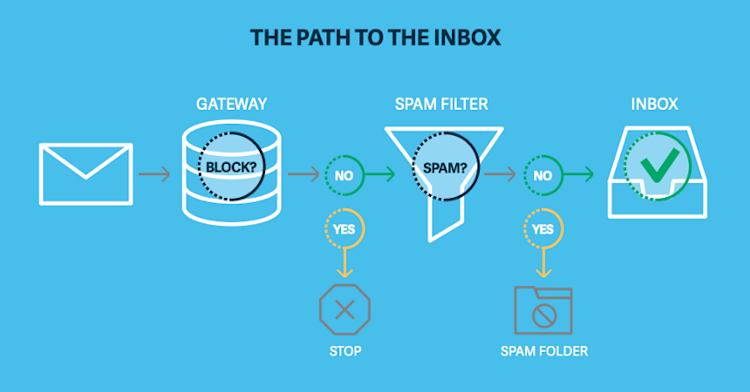
Email service providers (ESPs) and inbox service providers (ISPs) want to make sure that unwanted emails don’t make it to users’ inboxes, so they track a bunch of email engagement metrics about every sender, including:
-
Opens
-
Clicks
-
Unsubscribes
-
Bounces
-
Spam reports
To put it more simply: If your subscribers open and click through the links in your emails, it’s good for your deliverability. If they delete your emails without reading them or mark them as spam, it can hurt your deliverability.
If you have too many spam complaints, ISPs can end up blocking your emails altogether.
“Think of email engagement as a trust-meter. If you send emails that receive high levels of positive engagement, mailbox providers view you as a credible sender and reward you with improved deliverability,” explains email compliance analyst Robert Colomberti.
What does all this have to do with segmentation?
Personalized content can boost those key deliverability metrics. Even just including your recipient’s first name in your email subject lines can increase your click rate by up to 22.2%.
When you segment your email list, you can send emails tailored to your subscribers’ interests. And when you send relevant, targeted emails, you can avoid the number one reason people report emails as spam.
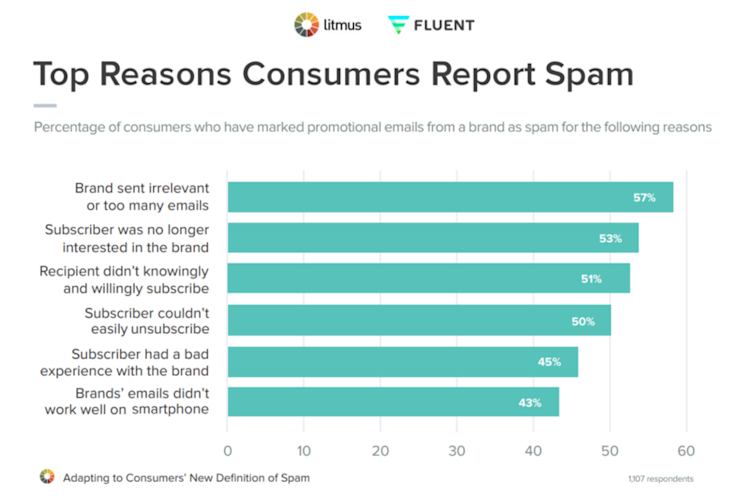
When it comes to deliverability, email engagement is about quality, not quantity. Segmentation lets you focus more on engaged subscribers and less on inactive users who are unlikely to become customers.
“Sending to your active contacts means more positive email engagement, and more positive email engagement means improved deliverability,” Robert shares.
OK, now that you know why email segmentation is a must-have, let’s dive into the how.
How to segment your email list (5 expert email segmentation strategies)
The more information you gather about your contacts, the easier it is to segment your email list.
That doesn’t mean you should create endless email segments just for the sake of it.
Instead, focus on what makes each segment unique:
-
What factors influence their buying decisions?
-
What makes them stand out from their peers?
-
What obstacles do they run into while trying to reach their goals?
-
What are they most interested in learning about?
With those questions in mind, here are five pro ways you can segment your email list beyond the geographic.
1. Offer lead magnets to learn their interests and needs
A surefire way to send your audience content that they’re interested in is to segment them accordingly. Segmenting subscribers based on their interests can lead to 10% higher open rates.
To figure out what your subscribers want to see, create lead magnets dedicated to specific interests and needs. A lead magnet is a resource, like a free digital download, that leads receive in exchange for subscribing to your email list.
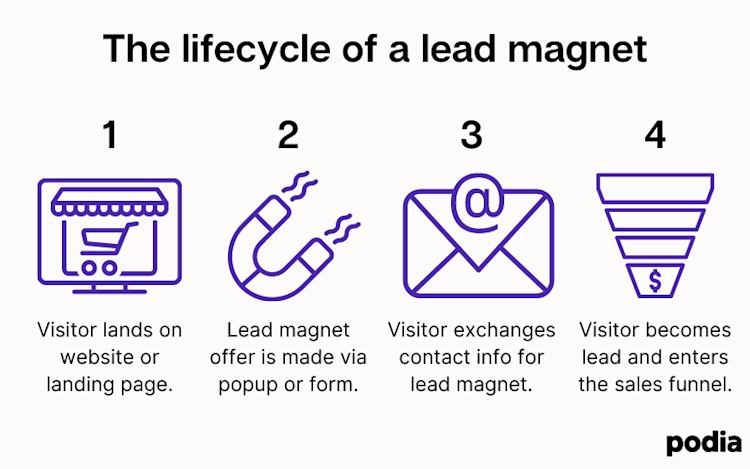
After you create multiple lead magnets, start segmenting subscribers based on which lead magnet they download.
Take Ryan of Signature Edits, for example. Signature Edits offers presets, templates, and training for their target audience of photographers.
Ryan knows that different photographers run into different pain points, so he offers two lead magnets: a sample of his candid posing guide and a free pack of photo editing presets.
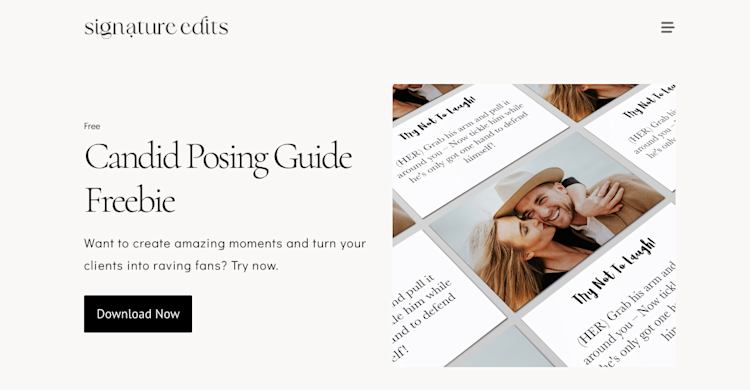
When someone downloads one of the lead magnets, Ryan sends them follow-up emails to tell them more about how his products and brand can help them succeed.
For example, if someone signs up for the photo editing presets, Ryan knows that editing is a point of interest — or even a pain point — for that person. With that info on hand, Ryan can confidently promote his editing products to that lead.
Ryan hosts his lead magnets through Podia, making it easy to create segments based on lead magnet downloads.
Here’s how it works:
On your Podia dashboard, head to the Email tab. Click “Create” and select “New broadcast”.
Give your email a subject line. Then, choose which subscribers will receive your email.
When you host a digital product or membership on Podia — whether for sale or for free — you can choose the people who have downloaded or purchased that product as your recipients.
All customers who (1) are subscribed to your email list and (2) have downloaded or purchased that product will receive your email. It’s that simple.
Try it out for yourself. Podia is free for 30 days!
If you don’t have time to create multiple lead magnets, don’t worry. There are plenty of other ways to segment your list — including our next tip.
2. Tailor messaging to their awareness level
Another way to segment your email list is by where subscribers fall in your marketing or sales funnel.
Your marketing funnel maps a potential customer’s journey from their first interaction with your business until they make a purchase.
Where a lead is in the funnel depends on how familiar they are with your brand or product and how close they are to making a purchase decision.
Different marketers break their marketing funnels into different stages, including the five stages of awareness:
-
Really unaware: They don’t know they have a problem.
-
Problem-aware: They know they have a problem, but don’t know how to fix it.
-
Solution-aware: They know there are solutions, but don’t know about yours.
-
Product-aware: They know about your product, but aren’t sure if it’s the solution for them.
-
Most aware: They know about your product and are considering buying it, but need more info.
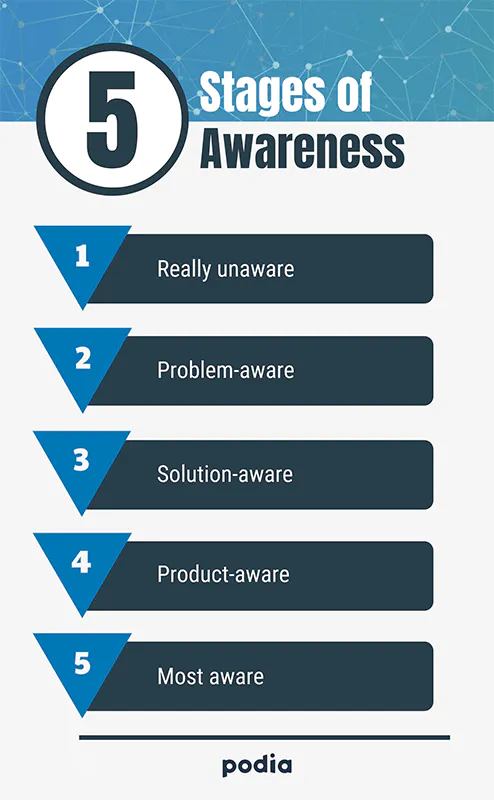
If you know a subscriber’s awareness stage, you can send them personalized emails based on that information. (Personalized emails deliver conversion rates six times higher than non-personalized emails, so it’s definitely worth it.)
For example, a solution-aware lead knows that there are ways to solve their problems, but they still need to learn about your product. Use your email copy to build this subscriber’s confidence in your ability to help them meet their goal — like in this email template:
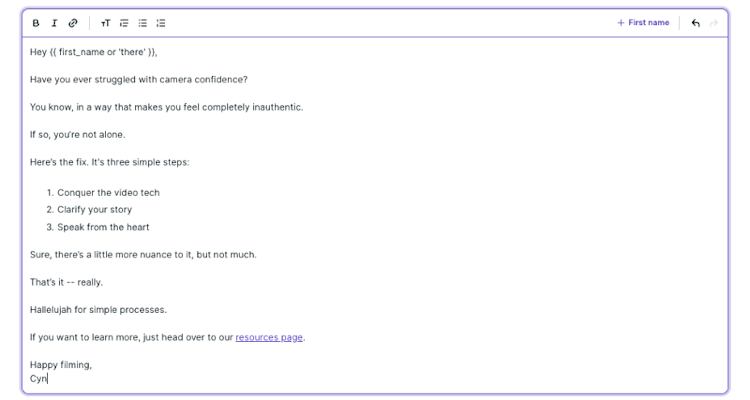
For more templates — and a deeper dive into emails for every awareness level — check out these digital marketing email templates you can use to send the right message at the right time.
What happens when a customer reaches the bottom of the funnel and becomes a customer? Our next segmentation strategy is the way to go.
3. Consider their purchase history
If anyone on your email list has ever purchased one of your digital downloads, enrolled in your online course, or joined your membership site, you can use that info to segment your list.
When you segment your subscribers based on their purchase history, you can create upsell and cross-sell campaigns later on.
Upselling encourages customers to buy an upgraded version of your product, while cross-selling recommends a product or service that complements what they already purchased.
One creator who makes the most of upsell opportunities is Reuven Lerner.
Reuven is a software engineer who transformed his offline training business into online courses for every level, including an “Intro Python” course for beginners.
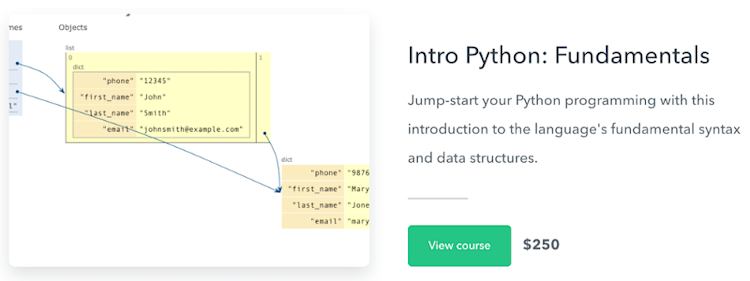
“If you have many different courses — intro, intermediate, advanced — then you have the opportunity for an upsell because if people really like your intro course, they will beg you for an advanced course… They’ll say, ‘You know what? I’m just going to buy all of it.’”
Reuven can target happy customers who have already taken his intro course and recommend that they sign up for a more advanced course. A staggering 75% of consumers are more likely to purchase when they’re offered tailored product recommendations.
And building that kind of customer loyalty is good business:
-
52% of customers go out of their way to buy from brands they’re loyal to.
-
Repeat customers are nine times more likely to convert than a first-time shopper.
Just like with lead magnets, Podia makes it easy for creators like Reuven to segment customers based on purchases. When you go to send an email broadcast, simply select the name of the product under “Recipients”.
Like before, all customers who (1) are subscribed to your email list and (2) have purchased that product will receive the email.
To sum it up, when you know what your subscribers have already bought (and loved), you can send them emails with personalized recommendations and turn them into repeat customers.
4. Use interactive content
Feeling creative? Another great way to learn about your audience is through interactive content, like quizzes.
Interactive content refers to any kind of content that requires active engagement from users. It’s quickly becoming one of the most popular and engaging forms of content marketing: 88% of marketers say that interactive content helps them differentiate their brand from the competition.
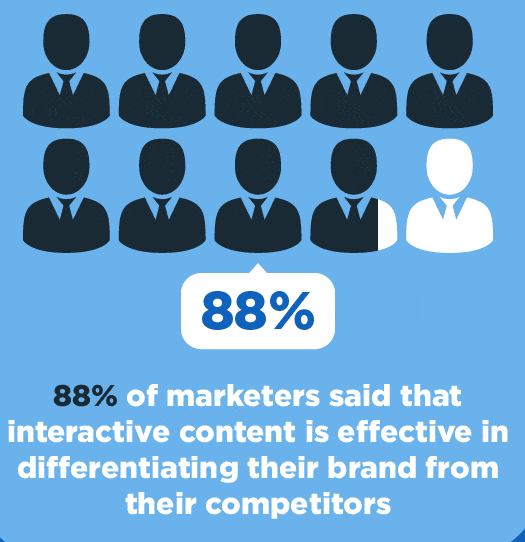
Plus, interactive content produces nearly twice the engagement rate of static content.
Creator Minessa Konecky of Direct to Success uses interactive quizzes to bring in and get to know new leads.
“Quizzes are an amazing way to convert people,” Minessa told us. “You get to know so much about an individual person, or even about your people, and the trends that exist within your audience.”
Minessa created a lead generation quiz, “What’s Your Business Blocker?”, with the Interact Quiz Maker.
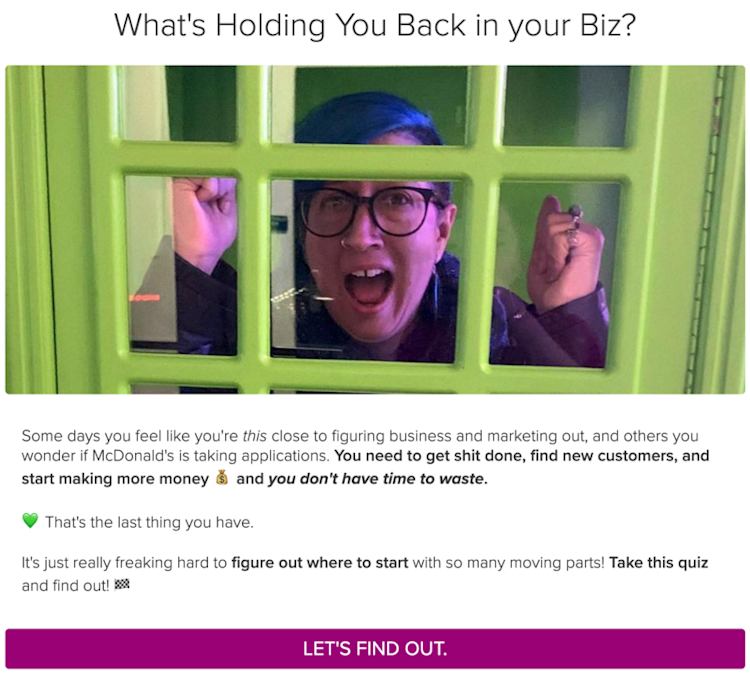
After someone takes her quiz, Minessa segments them into one of three groups:
-
Overwhelmed: Small business owners who have too much on their plates and aren’t sure how to manage their time.
-
Professional midlife: Entrepreneurs who have learned what they need to know, but haven’t figured out how to connect the action items into a strategy.
-
Perpetual procrastinators: People who know what they need to do, but can’t get started on their own.
Based on the group each lead falls into, Minessa moves them through the funnel by sharing one of three free mini-courses addressing their specific pain points.
Then, once her leads near the bottom of the funnel, Minessa introduces them to her products and encourages them to make a purchase or join her membership.
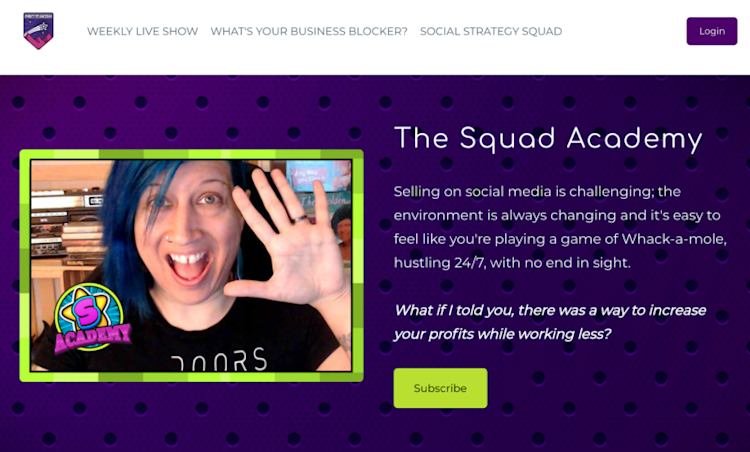
By bringing in leads with interactive content, Minessa creates a personalized experience from the first email subscribers receive through the entire customer journey.
Before we wrap up, I have one final segmentation strategy to share with you — and it’s all thanks to my mom.
5. Ask them what they want
The best advice I’ve ever received is “it never hurts to ask.” (Thanks, Mom!)
It’s an excellent piece of life advice — and it applies to figuring out what your audience wants, too. A segmentation survey can help you learn exactly what type of content your subscribers want to receive.
“Even sending a one-question survey can help gauge an interest, want, or need of your subscriber,” explains digital marketing pro Erik Harbison. “This can only help you determine a better approach for your content, sending cadence, and expectations.”
Your welcome email is a great place to ask new subscribers what kind of content they want to receive. Take this welcome email from Sleeknote, for example.
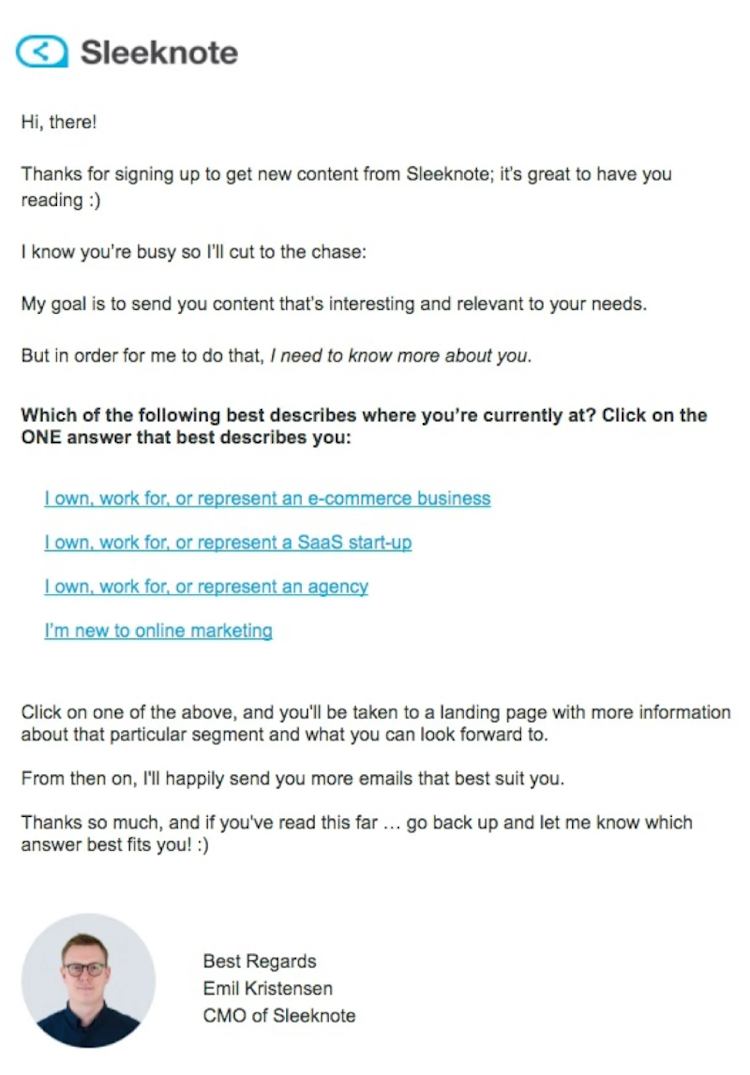
The Sleeknote blog focuses on e-commerce marketing, but their audience includes several different types of marketers and business owners. By asking new subscribers to identify themselves, the Sleeknote marketing team can break them into four segments:
-
Ecommerce
-
SaaS startups
-
Agencies
-
Online marketing newbies
From there, subscribers receive content tailored to their role and interests, helping them make the most of their Sleeknote subscription.
The bottom line is this: When in doubt, ask your subscribers what they want. They’ll likely be happy to tell you.
Take your email marketing to the next level with segmentation
All in all, segmenting your email list is a stellar way to send the right message to the right subscribers at the right time.
When you segment your email list, you can create a personalized experience that turns leads into customers and keeps them coming back for more.
To recap, here are five expert ways you can segment your subscribers:
-
Create lead magnets that meet different needs, then segment based on which one your subscribers download.
-
Tailor your messaging to where a lead is in the marketing funnel. Use the five stages of awareness — and our handy templates — to send email campaigns that hit home.
-
Use your customers’ purchase history to provide personalized product recommendations.
-
Create interactive content, like a quiz, that helps you learn more about your leads and customers.
-
Ask your subscribers what types of content they want to receive. A short survey can go a long way.
It may take some trial and error, but once you get the hang of it, get ready to watch your customer engagement, sales, and brand loyalty soar.
And if you need a place that makes managing all this a breeze, take Podia for a spin today. We can't wait to see what you make.
